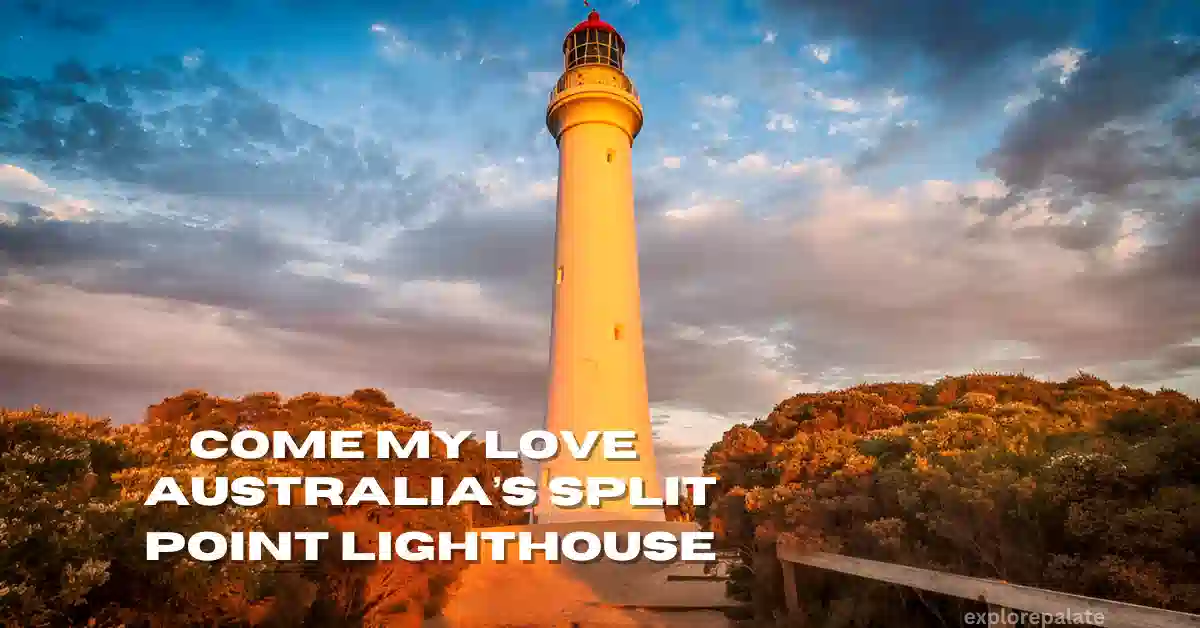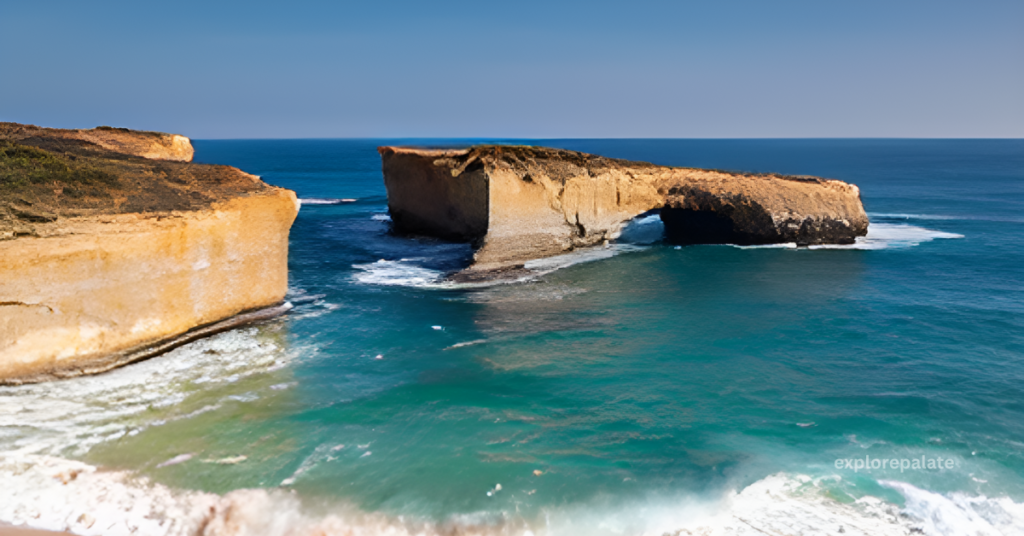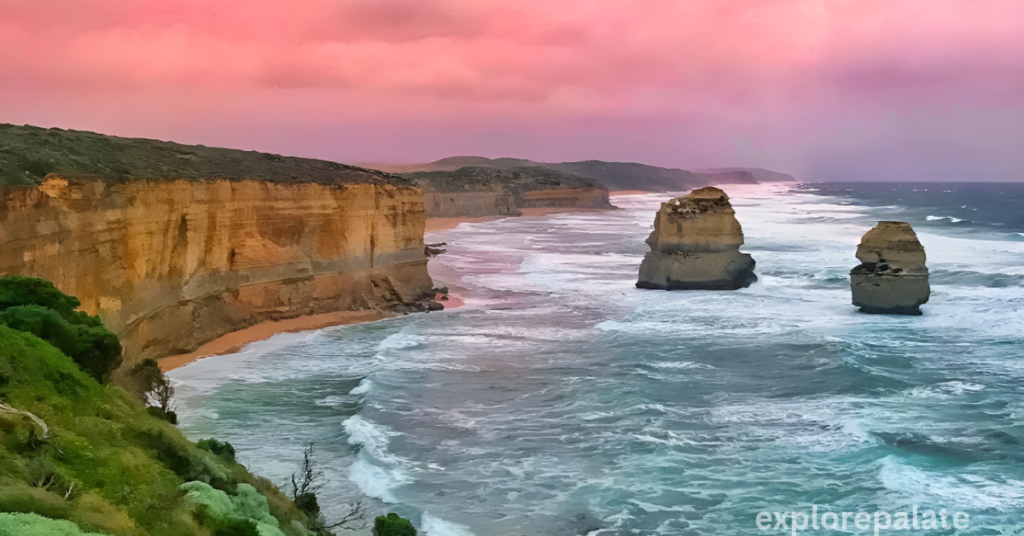The Split Point Lighthouse is more than just a 34-metre-tall structure with a distinctive red cap; it’s a beacon of history and adventure on the Great Ocean Road. Affectionately known as the White Queen for its stark white façade, this working lighthouse has stood watch over Eagles Nest Point since 1891. Accessible to the public, the lighthouse offers guided tours on weekends and is the guardian of the equally majestic Eagle Rock Marine Sanctuary and Philip Island, known for its rugged cliffs and wild beaches.
Why You Should Visit Aireys Inlet

Aireys Inlet, a serene pit stop along the iconic Great Ocean Road, serves as the gateway to the expansive Great Otway National Park. Famed for its surfing havens like Fairhaven and Anglesea Beach, the area is a collage of natural wonders from thrilling mountain bike riding to tranquil bird watching, and fishing. The Allan Noble Sanctuary whispers tales of early settlers like Thomas and Martha Pease and stands as a testament to the resilient heritage of this coastal hamlet.
History of Split Point Lighthouse
Initially, an unmanned beacon powered by kerosene in 1919, the Split Point Lighthouse marks the turning point in shipwreck narratives along the ominous Shipwreck Coast. The lighthouse’s automatic system introduced a modern look to its original design, evolving from a quiet residential area accessed by an unsealed road into a region planning for growth and public view.
Since November 2005, the Surf Coast Shire has partnered with Eco-Logic to offer tours that delve into the lighthouse’s history during the weekend and school holidays. A walk up the staircase to the balcony and lantern room rewards visitors with immersive historical narratives and panoramic views; it’s an experience reminiscent of earlier days when the lighthouse keeper’s quarters were more than a privately owned residence. The lighthouse’s fame reached households through television shows like Round the Twist, immortalizing Australia’s country’s rugged scenery.
Walking Trails Near the Split Point Lighthouse
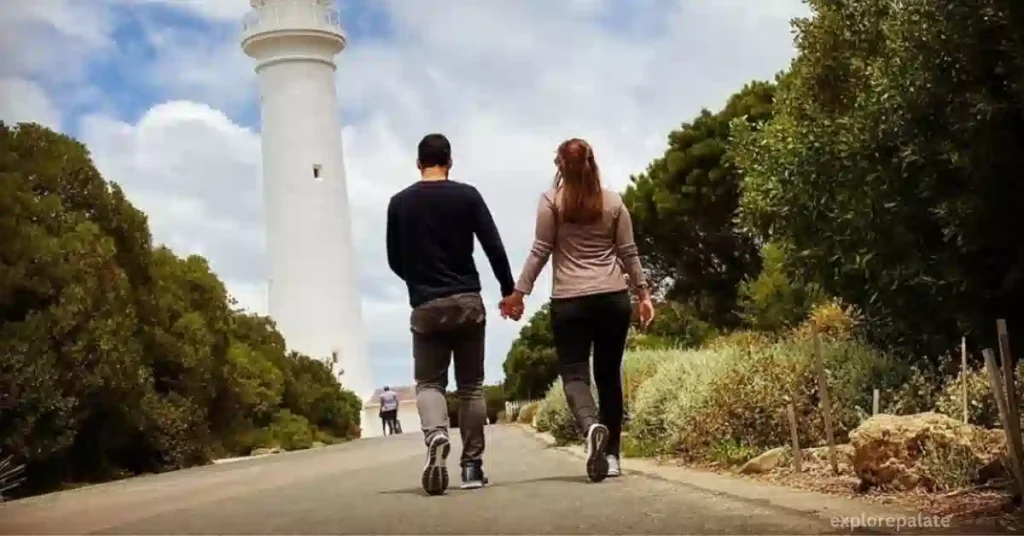
The Lighthouse Discovery Trail, a scenic 2.2-kilometer path, sparks joy for avid explorers and casual strollers alike. It connects the history-rich Split Point Lighthouse to areas like Sunnymead and Fairhaven, offering a chance for whale-watching and introspection. Traversing through tribal boundary lines, low hills, and steps, those with an adventurous spirit are rewarded with breathtaking views. Another trail, the Aireys Clifftop Walk, is a serene 2.7-kilometer sojourn that bridges the beach to the bush in a reflective coastal march.
Exploring the Great Otway National Park
Immersed in the Great Otway National Park is a world of adventure waiting for those eager to witness cascade waterfalls, experience ziplining through the forest canopy, or bask in the embrace of nature. It’s a place not just of exploration but of connection—perfect for time with family and friends.
Eagle Rock Marine Sanctuary
At the cusp of Aireys Inlet, the Eagle Rock Marine Sanctuary spans a marine-rich 17 hectares. Trace the rugged outlines of Eagle Rock and Table Rock. Submerge into the world of countless marine species, from cunning octopus and scuttling crabs to vibrant sea sponges and elusive sharks. Above, sea birds soar, while below, remnants of ‘middens’ speak of ancient Aboriginal cooking sites where a myriad of mollusks and invertebrate animals like sea snails and mussels once flourished.
Southern Ocean
The Southern Ocean engulfs the racetrack of rock island with waters fluctuating from blue to turquoise, cradling not just the mystery of the deep sea but historical echoes of clandestine voyages. This ocean, skirted by Australia’s southern coast, is an anthology of stories—some painted with the grim hues of failed journeys and lives lost, others championing human success, courage, strength, determination, intuition, faith, and luck. In WWII, a navy pilot might have glimpsed the solitary light guiding him home, painting a stark contrast to the dark, scary waters of modern-day narratives.
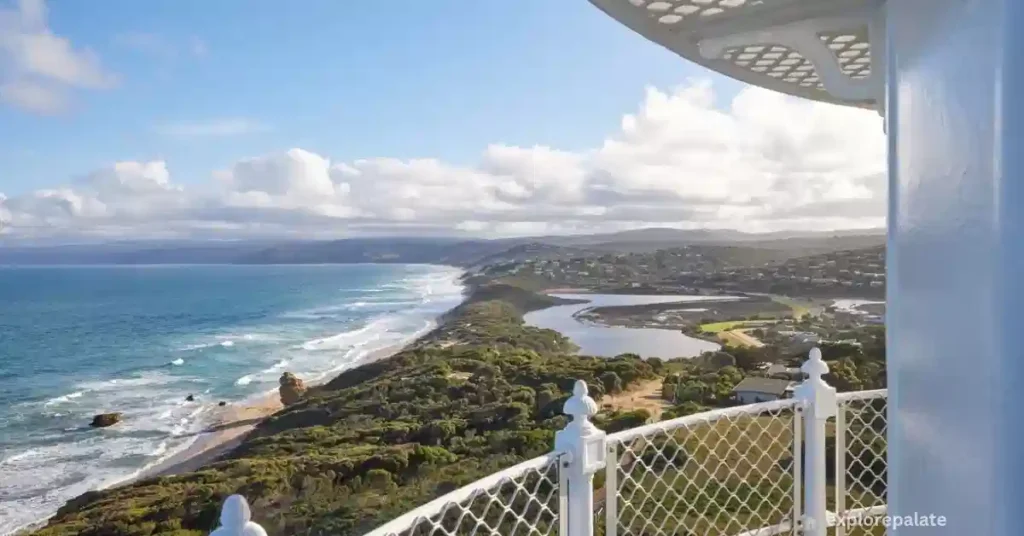
Cliffside Views Looking Out at the Southern Ocean
Cliffside views of the tumultuous Southern Ocean serve as a natural canvas showcasing the palette of a highly expressive artist—nature herself.
Conclusion
The Split Point Lighthouse is an emblematic symbol of heritage and adventure on Australia’s Great Ocean Road. Known as the White Queen, its shining light and history-rich structure invite exploration and discovery. Beyond guiding sailors, it offers panoramic views, a glimpse into the area’s storied past, and a gateway to the natural splendors of Eagle Rock Marine Sanctuary and the Great Otway National Park. In its over a century-old vigil, the lighthouse remains a beacon for those drawn to the allure of sea, history, and unspoiled landscapes.
You Might Also Like
FAQs
What is the history of the Australian lighthouse?
First lit in 1818, the cost of the lighthouse was recovered through the introduction of a levy on shipping. This was instigated by Governor Lachlan Macquarie, who ordered and named the light. The following century oversaw the construction of hundreds of lighthouses around the country.
What is the most famous lighthouse in Australia?
Cape Byron Lighthouse. Cape Byron Lighthouse, Byron Bay Great panoramic views along with outstanding walks, although it’s up high all the way.
How many steps are in Split Point Lighthouse?
Scale the 136 steps to the top of the beautiful ‘White Queen’ lighthouse for sensational 360-degree views. Built-in 1891, the 34m-high lighthouse is still operational, though it’s now fully automated.
Which lighthouse was round the twist?
Throughout the series, several locations in Victoria, Australia, were used for external shots. Exterior scenes of the Twist family’s lighthouse home were shot at the Split Point Lighthouse in Aireys Inlet. The school and some town scenes were shot in Williamstown, Point Lonsdale, and Queenscliff.
What is the story behind lighthouses?
Beginning in the 17th century, however, as travel on the high seas increased, major coastal lighthouses were constructed to warn mariners of dangerous rocks, reefs, and currents. Twelve lighthouses were constructed in Britain’s American colonies in the 18th century. The first was built in 1716 in Boston Harbor.

